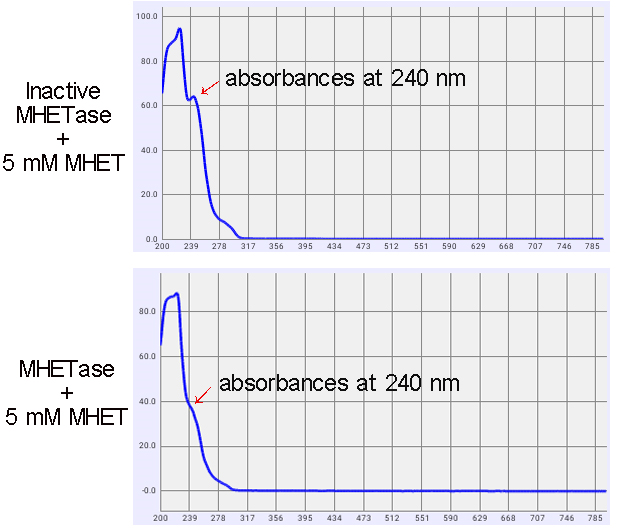Part:BBa_K3997004
pET28a-IsPETase-His
promoter
Profile
Name: pET28a-IsPETase-His
Base Pairs: 2107 bp
Origin: Ideonella sakaiensis 201-F6, synthetic
Properties: Polyethylene terephthalate degradation enzyme
Usage and Biology
Polyethylene terephthalate (PET) is the most widely produced polyester plastic and its accumulation in the environment has become a global concern. At the same time, the daily intake of microplastics by humans is gradually increasing, which damages human health. Therefore, researchers believe that it is important to develop an environmental-friendly plastic degradation method by using microorganisms. Recently, a novel bacterial strain called Ideonella sakaiensis 201-F6 has been discovered that produces a couple of unique enzymes, IsPETase and MHETase, enabling the bacteria to utilize PET as their sole carbon source.
PET hydrolase, known as IsPETase, is a recently discovered enzyme that has been found to break down PET, or polyethylene terephthalate-(C10H8O4)n. When the IsPETase-containing bacteria or fungi are administered to PET plastic, they secrete the PETase enzyme, which causes PET polymers to bind to the active site of IsPETase, allowing the reaction to occur. During the reaction, the enzyme breaks ester bonds in PET.
BBa_K3997001
Name: 6×His
Base Pairs: 18bp
Origin: synthetic
Properties: Polyhistidine tag
Usage and Biology
It is an polyhistidine tag, which is used in the purification of recombinant proteins
BBa_K3997000
Name: IsPETase
Base Pairs: 2107 bp
Origin: Ideonella sakaiensis 201-F6
Properties: hydrolysis of PET.
IsPET hydrolase, known as IsPETase, is a recently discovered enzyme that has been found to break down PET, or polyethylene terephthalate-(C10H8O4)n. When the IsPETase-containing bacteria or fungi are administered to PET plastic, they secrete the IsPETase enzyme, which causes PET polymers to bind to the active site of IsPETase, allowing the reaction to occur. During the reaction, the enzyme breaks ester bonds in PET.
Experimental approach
In order to present the function of the part, the PETase gene was PCR amplified and cloned into pET28a plasmids backbone in order to express the protein in E. coli under the control of T7 promoter.
Proof of function
1. Enzyme Activity Tests
The activity of MHETase was indicated by the decline absorbances at a wavelength of 240 nm (Figure 3). The wavelength is the specific absorption of MHET. As shown in figure 4, after 1 d reaction, MHET concentration was dropped by 31.4%.
References
1. Shosuke Yoshida et al. A bacterium that degrades and assimilates poly(ethylene terephthalate), Science (2016).
2. Harry P Austin. et al. Characterization and engineering of a plastic-degrading aromatic polyesterase, PNAS(2018)
3. Chun-Chi Chen et al. General features to enhance enzymatic activity of poly(ethylene terephthalate) hydrolysis, Nature Catalysis(2021).
Sequence and Features
- 10INCOMPATIBLE WITH RFC[10]Illegal XbaI site found at 510
- 12INCOMPATIBLE WITH RFC[12]Illegal NheI site found at 153
Illegal NheI site found at 466 - 21INCOMPATIBLE WITH RFC[21]Illegal XhoI site found at 1033
- 23INCOMPATIBLE WITH RFC[23]Illegal XbaI site found at 510
- 25INCOMPATIBLE WITH RFC[25]Illegal XbaI site found at 510
Illegal AgeI site found at 789 - 1000COMPATIBLE WITH RFC[1000]
| None |




